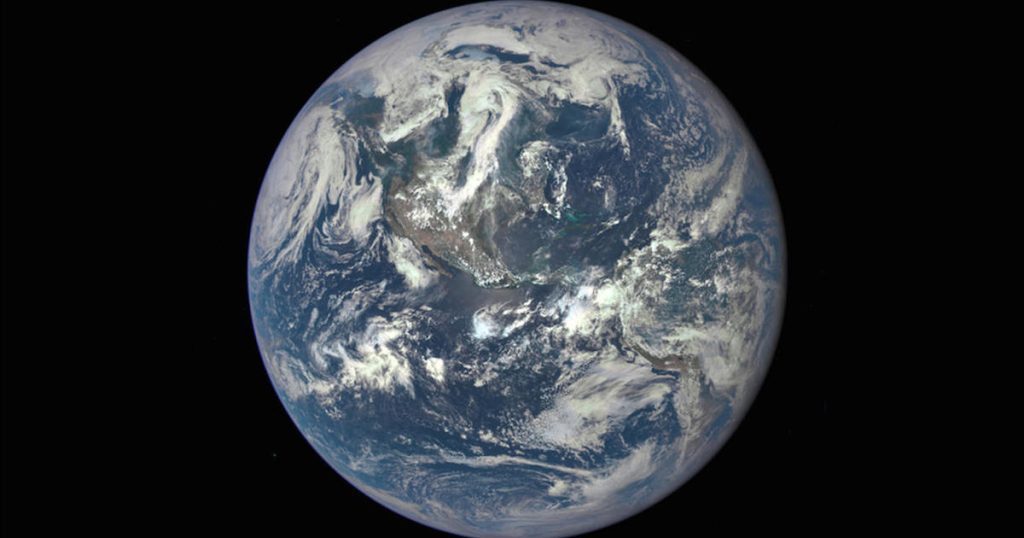While Earth on June 29 already did it Record her shortest day Since the atomic clock was adopted in 1970 – at 1.59 milliseconds less than 24 hours – scientists say this is a natural fluctuation.
However, news of the faster rotation has led to misleading posts on social media about the importance of scaling, leading some to express concern about its implications.
One tweet, shared nearly 35,000 times, claimed: “They spread the news of the Earth spinning faster which looks like it should be bigger news.” “We’ve lowered our sensitivity to getting into a disaster at this point, it sounds like the next step.”
Some Twitter users responded to these tweets with jokes, as well as questioning the scale of the measurement. However, others expressed concern about how this might affect them.
But scientists told the Associated Press that the speed of Earth’s rotation is constantly fluctuating and that the standard measurement is nothing to worry about.
“It’s completely normal,” said Stephen Merkowitz, a scientist and project manager at NASA’s Goddard Space Flight Center. “There’s nothing magical or special about this. It’s not such an extreme data point that all the scientists get up and go, what’s going on?”
Andrew Ingersoll, professor emeritus of planetary sciences at the California Institute of Technology, agreed with that assessment.
“Earth’s rotation varies in milliseconds for many reasons,” he wrote in an email to The Associated Press. “None of them are cause for concern.”
A slight increase in rotational speed also does not mean that the days pass noticeably faster. Merkowitz explained that the standard time once was determined by how long it takes the Earth to rotate once on its axis – widely understood as 24 hours. But since this speed fluctuates quite a bit, this number can vary in milliseconds.
In the 1960s, scientists began working with atomic clocks to measure time with greater accuracy. Scientifically speaking, the official length of one day, Mirkowitz said, now compares the speed of a complete Earth rotation to the time taken by atomic clocks. If these measurements get significantly out of sync, the International Earth Rotation Reference Systems Service, an organization that maintains world time, may fix the discrepancy by adding a leap second.
Some engineers oppose the introduction of the leap second, as it could lead to devastating and large-scale technical problems. Meta engineers Oleg Obleukhov and Ahmad Byagowi wrote a blog post on the topic for Meta, which supports an industry-wide effort to halt future introductions of leap seconds.
“Negative handling of leap seconds has been supported for a long time, and companies like Meta often run simulations of this event,” they told CBS News. “However, this has not been extensively verified, and is likely to lead to devastating and unpredictable outages around the world.”
Despite recent declines in the length of a single day over the past few years, days have actually been getting longer over several centuries, according to Judah Levine, a physicist in the Department of Time and Frequency at the National Institute of Standards and Technology. He added that the current trend was not expected, but agreed there was nothing to worry about.
Many variables affect the Earth’s rotation, such as influences from other planets or the Moon, as well as how the Earth’s mass is redistributed itself. For example, melting ice sheets or weather events that create a more dense atmosphere, according to Mirkowitz.
But Mirkowitz said that the kind of event that would move enough mass to affect Earth’s rotation in a way that is perceptible to humans would be something as horrific as a planet hit by a giant meteorite.
Caitlin Oaken contributed to this report.

“Extreme travel lover. Bacon fanatic. Troublemaker. Introvert. Passionate music fanatic.”







More Stories
A fossilized creature may explain a puzzling drawing on a rock wall.
MrBeast Sued Over ‘Unsafe Environment’ on Upcoming Amazon Reality Show | US TV
Watch comets Lemmon and SWAN approach Earth today